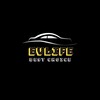- Admin
- Nov 01, 2024
- Buying Guides
- Read: Small Medium Large
Hyundai Reveals Initium Concept, a Hydrogen Fuel Cell SUV Coming Soon
Intended as an urban vehicle for the future 'hydrogen society,' the Initium is planned for production next spring with a claimed 400-plus miles of range.
-Hyundai's latest concept shows new "Art of Steel" design language wrapped around a third-generation hydrogen fuel cell stack.
-Technical details are slim, but the new powerplant and three "large" H2 tanks should provide over 400 miles of range and a maximum motor output of 150 kW in the production version that will arrive in the spring of 2025.
-Designers listened to customer desires to create an FCEV that is meant to look as at home in an urban environment as it is in the rougher outdoors.
Hyundai's latest hydrogen vehicle is ready for its close-up, but not for too close a look. Called Initium, the Latin word for "beginning" or "first" (quick, someone ask the Toyota Prius how it feels about this), the new SUV concept previews Hyundai’s next passenger fuel-cell model that will arrive in production form in the first half of 2025.
The Latin plural of Initium means mysteries, and that certainly applies to the FCEV's technical details for now. Still, there are a few details to be had. Hyundai said the Initium uses large hydrogen fuel tanks of an undisclosed size and low-rolling-resistance tires to maximize the vehicle's range. Hyundai said it is targeting a driving range of over 400 miles with a maximum motor output of 150 kW.
Compared to the Nexo, Hyundai's current FCEV, zero-to-100-km acceleration has been dropped to 8.0 seconds (the Nexo got to 60 mph in 8.4 seconds in our testing), while highway passing speeds (80–120 kph) are claimed at 6.0 seconds. "This is outstanding acceleration performance compared to competitor FCEVs," said Jin Hwan Jung, Hyundai senior vice president in charge of vehicle development technology, at a presentation in Seoul.
The production Initium FCEV will use Hyundai's third-generation fuel cell stack, following the company's first independent design in the 2013 Tucson FCEV, which had a power density of 2.09 kW/l, and the 2018 Nexo (3.2 kW/l). Precise numbers were not available for the new stack, but engineers told Car and Driver it would be another improvement. The durability of the new stack will also be increased by 40 percent compared to the Nexo stack. A small door on the rear passenger side of the Initium does not indicate that this is a PHEV FCV but instead hides a typical (in Korea) 220-volt household outlet since the Initium is able to provide vehicle-to-load (V2L) electricity. With full H2 tanks, the Initium will be able to produce around 100.0 kWh of offboard power, enough to power a typical Korean home for around 10 days, Hyundai said.
Initium Set to Be the Hydrogen Flagship
What Hyundai is more interested in talking about at this stage is the new "Art of Steel" design language. The Initium continues Hyundai’s striking string of recent design hits, this time with a focus on a more rugged look that’s supposed to be at home in urban or outdoor settings. Thick, blocky fenders meet golden steel in an appropriately tough update to the Nexo. Hyundai didn't show any of the vehicle's interior but did say it has nine airbags, driver monitoring through an in-cabin camera, and safety features like highway drive assist.
SangYup Lee, global design head for Hyundai and Genesis, said Initium is a "flagship" for the upcoming hydrogen society. "We took a new approach of exposing the materiality as it is, and we elevated the resilience of steel to morphological beauty," he said through an interpreter. "We call it the 'art of steel,' and this is the starting point of essential beauty you can feel from this car."
Touches of the company’s now-familiar parametric pixels light signature can be found all around the exterior, from the square or rectangular headlamps to the four dots in the grille, mimicking the four found on the steering wheels of cars like the Ioniq 5 and the Inster electric city vehicle (which also spells out H in Morse code). The pixel theme continues in the front and rear lights in the integrated roof rack. Hyundai's HTWO symbol, which looks like a pair of capital H letters sharing a side, can be found in the roof rack and rear mirrors. "With the armored design bumper invoking a solid hydrogen tank and rear steel parts exposed instead of a muffler, we made the car look strong and rugged," Lee said.
The Initium is not all right angles, though. Curves in the design of the 21-inch wheels, the C-pillar, and the rear window keep the Initium from looking too blocky. Horizontal stripes draw a line from the front wheels to partway through the rear doors. It's easy to imagine this existing as a production vehicle, but Hyundai said the real mission was to express the character of HTWO, the hydrogen value chain business brand owned by Hyundai Motor Group.
And that's really where the Initium fits in. The majority of the vehicle reveal session in Seoul was a Hyundai hydrogen history lesson, with indications of where the automaker sees H2 in the future. Hyundai Motor president and CEO Jaehoon (Jay) Chang put it most distinctly when he said, through an interpreter, that Hyundai "will build the hydrogen ecosystem for cleaner, quieter, and safer fuel cell EVs to effortlessly become part of your daily life, for everyone, everything, everywhere."
Even with its much smaller size and superior hydrogen refueling infrastructure compared to the U.S., it is not easy to live with an H2 vehicle in South Korea. As of September 2024, there are around 200 H2 fueling stations in the country. The Initium's navigation system features an FCEV-specific route planner that will allow drivers to plan their routes without range anxiety. The map won't just point the driver to the station but can also make sure that a particular station is operational and see if there are any other H2 vehicles waiting to fill up.




